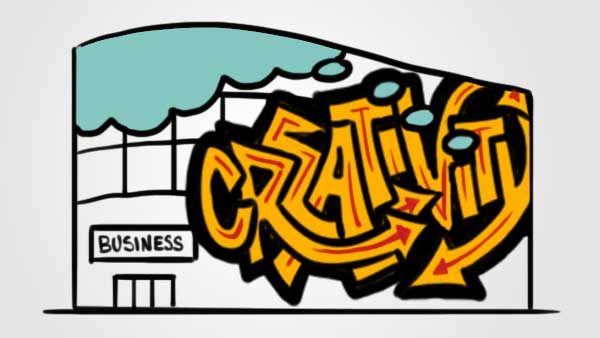Characteristics of Creativity in Business

The 6 C’s
Creativity and TruScribe.
Like a whiteboard and a video, we go hand in hand.
We’ve talked before about leveraging creativity to improve your business and ways to get your creative energy flowing at work.
But to bake creativity into your business from day one, focus on specific characteristics that can nourish creative success.
Diamonds can be evaluated using the 4 C’s (carat, cut, color, and clarity). Through our research and experience, we’ve narrowed down what we’ll call “The 6 C’s”, key characteristics of creativity in business. Cultivate some or all of these factors to create a business that’s truly a rare gem.
Communication
According to Adobe’s 99u, communication is a prominent predictor of “particularly productive creatives”. As a bonus, use this test to gauge the skill in a potential hire.
We list communication first because it’s seriously foundational. Great creative ideas can be complex; clear communication helps get others on board and fosters good working relationships. And even the best ideas can go unheard when communicated poorly.
For creativity to flourish in a business, it’s key to communicate in a direct, concise, frequent manner.
Curiosity
IDEO Products researched and interviewed hundreds of organizations to understand what makes creative businesses sink or swim. The results are fascinating – one data point indicated that teams experimenting with 5 or more ideas simultaneously are 50% more likely to be successful.
Experimentation typically begins with a question – a question predicated on curiosity. Curiosity can also lead to investigating gaps in a market or seeking new opportunities for growth or variety. Those who are curious aren’t always seeking adventure. Sometimes they’re just more aware of their surroundings and interested in the possibilities they see.
Add a healthy amount of creativity to a heightened sense of awareness and you’ll be rewarded by ample and diverse ideas.
Collaboration
“The more I observed creativity in action the more I realized that the most radical breakthroughs—including television, the airplane, e-mail, and even the board game Monopoly—emerged from a collaborative web that can’t be contained within any one company’s walls.”
Group Genius: The Creative Power of Collaboration by Keith Sawyer
The Farnam Street blog. has some important insights from this book. The truth about collaboration is that it encompasses a broad swath of qualities critical to successful creative businesses. To collaborate effectively, you need to be a good listener, let go of your ego, and be open to seeing your ideas grow and change.
Collaboration is an ideal creativity cultivator.
By encouraging collaboration, you’re bringing together complementary skill sets to ideate, problem-solve, and plan in a cross-functional escape from creativity-stifling silos.
Change
The most successful creative companies embrace change.
Change is a natural outcome of things that are natural to creatives.
Things like thinking outside the box, iterating quickly, and taking big risks- all common characteristics of thriving creative innovators. Being fearless in the face of change also reflects a leadership mentality common among those at the helm at some of the world’s most legendary creative companies (like Apple and Google): accepting (even encouraging) failure. After all, failure is just another form of change on the road to success.
Change and failure will always occur as businesses evolve. The truly creative among us will see this as an educational opportunity.
Common goals
Find your company’s “why.”
Take the time and make the effort to define a purpose.
This collective mission can drive creativity in myriad ways. Metrics and KPIs, for example, incentivize and empower your team. Rallying around a common goal can help your colleagues feel more connected to each other, and to the company as a whole.
There is a reason visionaries are called that – they are aimed toward a vision. Purpose-driven teams see 61% more success compared with teams that don’t use a purpose to guide them.
Confidence
As one study from Harvard Business Review points out, there are some people who are hardwired to be creative– they’re passionate, voracious learners who experiment and seek out new experiences.
But they don’t all become successful.
A big differentiator between creative people and creative people who are successful in business is confidence.
This confidence is full circle. First believing you have the education and background to pull off a big idea, then being unafraid to approach others to collaborate with you to make it happen- ultimately celebrating your accomplishment and building upon it with the next great innovation.
Confidence also factors into asking the right people the right questions at the right times – without the fear of looking silly or being wrong. And confidence is crucial when it comes to listening to your intuition, and making big decisions quickly. As Fast Company puts it, “the real difference between you and the creative leaders who inspire you is action.”
Armed with the 6 C’s, what creative idea will you put into motion today?
Whether it’s your very first business plan or just a new approach to an old problem, we hope that this insight of key characteristics of creativity in business can help guide you and strengthen your own business.
